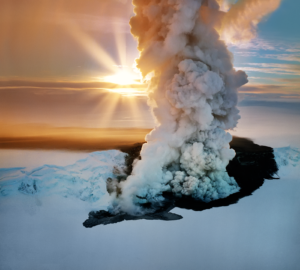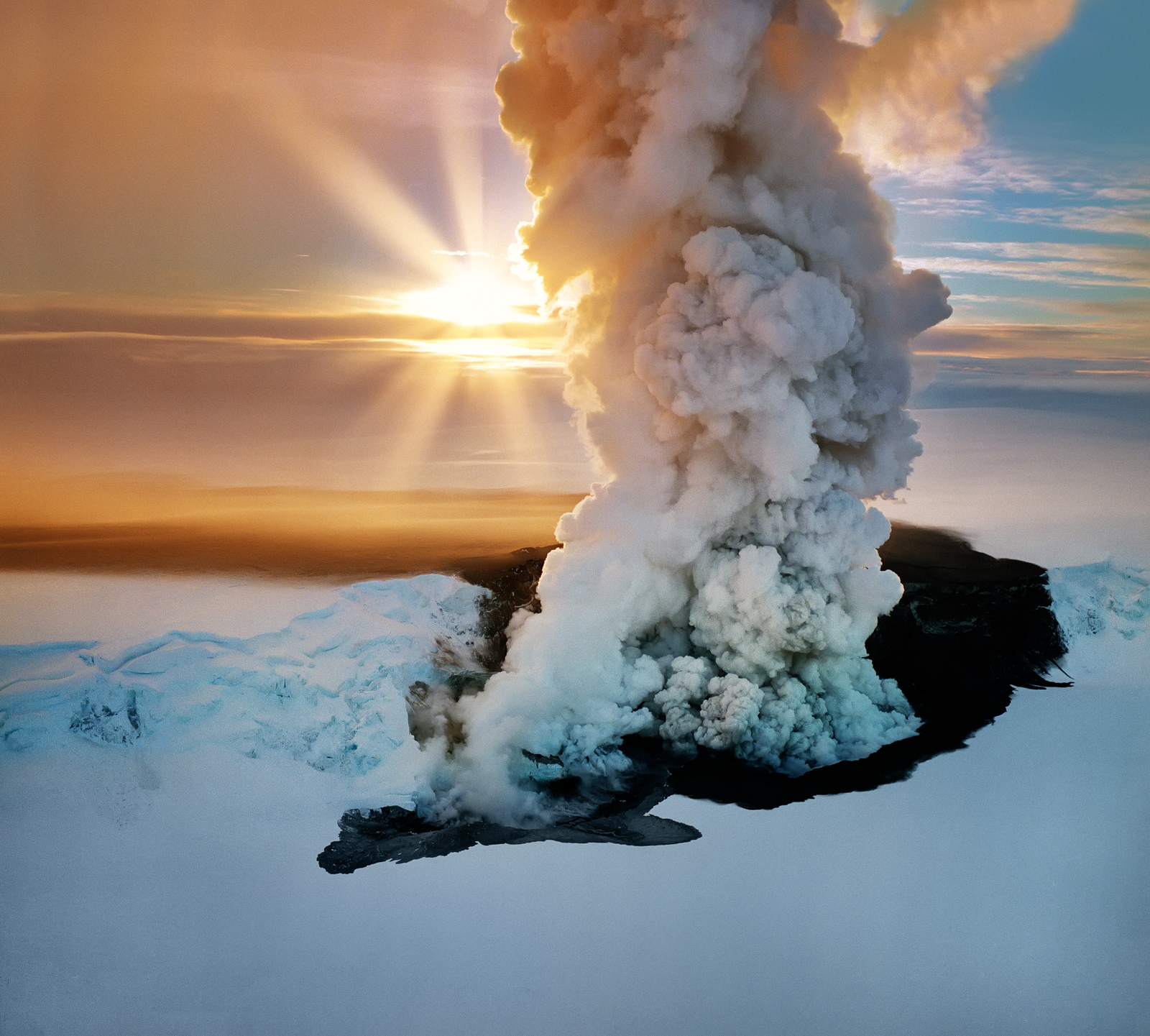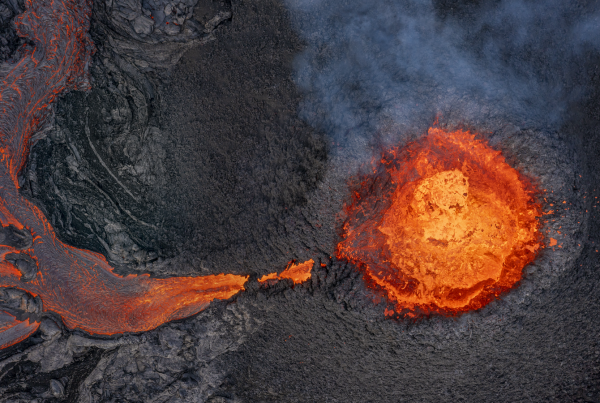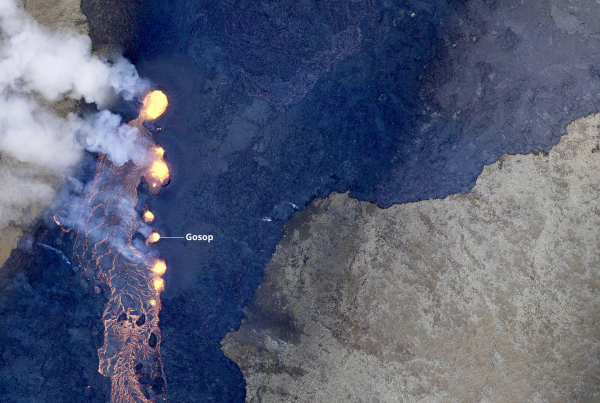 The Grímsvötn central volcano in the Vatnajökul Ice Cap is big and the top caldera consists of three interlocked subsidence areas. The fissure swarm is 100 km long and up to 20 km wide. Over 50 volcanic eruptions have occurred in Grímsvön during the past 1,100 years, as well as a few more in the fissure swarm. These include for example the huge Laki eruption in 1783 and a subglacial eruption NW of Grímsvötn in 1996 (Gjálp).
The Grímsvötn central volcano in the Vatnajökul Ice Cap is big and the top caldera consists of three interlocked subsidence areas. The fissure swarm is 100 km long and up to 20 km wide. Over 50 volcanic eruptions have occurred in Grímsvön during the past 1,100 years, as well as a few more in the fissure swarm. These include for example the huge Laki eruption in 1783 and a subglacial eruption NW of Grímsvötn in 1996 (Gjálp).
There is a lake underneath a 100-200 m-thick glacial ice shelf. The water stems from heavy geothermal activity as well as from normal ice melting. The lake size and depth slowly increase until, every 3 to 5 years, the caldera releases a lot of water in a subglacial flood. The water flows up to 50 km until it appears at the edge of the Skeiðarárjökull outlet glacier close to the „Ring road“, west of the Vatnajökull National Park. The discharge may vary from 1,000 to 50,000 cubic metres per second. The most powerful „jökulhlaups“ follow some of the volcanic eruptions, like the one in 1996. A reduction of the water load on the caldera floor, which is the „roof“ of the underlying magma chamber, can trigger a volcanic eruption.
This was the case in for example 1934 and 2004
The eruptions in Grímsvötn are typically explosive ash and pumice-producing events due to contact between magma and water. Most are not fierce or productive but with exemption, like in 2011 when a short but powerful eruption discharged more ash per second than the infamous Eyjafjallajökull-eruption in 2010. However, it did not cause much trouble for the air traffic.
Grímsvötn is a very active volcano, with seven eruptions between 1922 and 2011. In November last, the subglacial lake reached an area of more than 17 square kilometres and contained over one billion cubic metres (1 cu. km). A flood commenced and reached a max. discharge of at least 3,500 cubic metres pr. second (about ten times the average discharge of Iceland´s largest river – Ölfusá). The Grímsvötn ice shelf subsided about 75 m.
The volcano has been subjected to an influx of magma for years, seen from monitored land elevation changes. Earthquake unrest is common (up to magnitude over 3). The newest „jökulhlaup“ could soon trigger a volcanic eruption but the volcano might still linger on. In case of volcanic unrest, some tell-tale signs would be picked up by the elaborate monitoring system of the Icelandic Met. Office.
By Ari Trausti Guðmundssson



